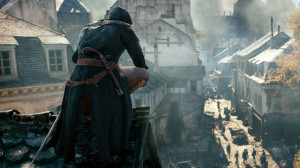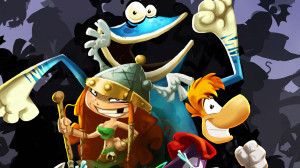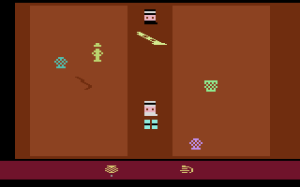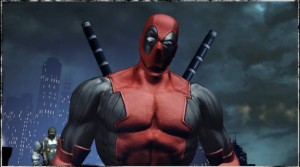Gaming by Visual Standards
Taking a look upon my gaming library for the PlayStation 3, as well as my PlayStation 4, I notice a stark trend over certain games. As we breeched the eighth generation of video game power (or POWAAA if you are so inclined), we became fond of photorealism and perfecting a video game world that mimics our own – to a certain extent, of course (‘reality is unrealistic’).
Perhaps I should explain. One of the most common criticisms lobbed at modern media is the persistence of ‘maturity,’ this darker and edgier atmosphere where every other word in any script is a swearword and presented in a graphics engine capable of making characters look like real actors. It isn’t maturity in the sense of an adult mindset, capable of dealing ‘grey versus gray’ morality, but rather the ultra-violent, bloody gameplay typified by Gears of War, Manhunt, and other such attempts at glamorizing gore. Your sole interaction with the gameworld is shooting everything that crosses your path, with blood and guts spewing the camera.
It’s the teenager’s idea of an ‘adult’ game, when he can’t have the other interpretation of ‘adult.’
It’s often presented in stark contrast to generations past. There’s a perception that over the years, the industry migrated from a cheerful, idealistic past to a grittier, pessimistic present, where expressing the good of humanity is seen as too childish. Many gamers my age recall playing such games as Mario and Zelda, alongside PC counterparts as Commander Keen and Myst, which are quite different from modern Call of Duty titles or Gears of War. Many early games held a sense of wonder to them, to be sure, a sense of child-like glee and brightness that helps cheer everyone around them. When you play a Mario game, you play it because of nostalgia and its cheerful, whimsical nature.
However, there’s this persistent view that video games mutated from a cartoon-inspired mish-mash of tropes to hyper-realistic renderings of grunting, 30 to 40-year-old men who greet the world with and between bursts of firepower. And this is peculiar, as we push to make video games ‘relatable,’ and it raises an ever important question: does a game need ‘maturity’ to be taken seriously in the current environment?
It mimics and mirrors complaints lobbed at current cinema fare, where we watch Torgue-quality explosionfests in-between the other films we wish to peruse, and it gives the impression that everything’s drowning in blood, shades of dirt and grim, and enough guns to obliterate civilization as we know it. It’s this type of action-bloated fare that people criticize, a derivative hodge-podge of middle-aged men who kill instead of plot and snarl instead of emote. If you ever played Duke Nukem, Gears of War, or Halo, you know exactly what people are discussing when this comes up: the video game adaptation of Big Damn Heroes or Space Marine: The Game.
Are we really that drawn to killfests, needing this constant barrage of bullets and one-liners, rendered to look as real as possible, to take a game seriously? Taking a cursory glance at the current gaming scene would suggest so – in-between playing Nolan North as Deadpool, Nolan North as Nathan Drake, any assassin in Assassin’s Creed, and the protagonists of any litany of first-person shooters, it’s easy to believe that gamers think that’s what makes a good Video Game Protagonist. It’s especially enticing for a video game market that can finally render something that realistically, like an interactive Jan van Eyck painting. If he had been drinking a little too much rum and needed to rage.
That technological reason is partially why ‘realistic’ games are in vogue. Over the 40-odd years of video game history, three-dimensional models didn’t become the norm for console until the fifth generation and they look like cardboard models when compared to modern games. Go further back and you’re dealing with sprites for the most part, with the earliest consoles capable of little more than blobs of light (Maganox Odyssey) or images barely able to represent what they intended (Atari 2600, Pong). When you aren’t able to create detailed, accurate models of your vision, you learned to be creative. A spaceship for Yar’s Revenge barely looks like what it’s supposed to, whereas these days you can fully render a Star Destroyer from Star Wars with the same (or similar) level of detail and realism as anything in a Hollywood movie.
the earliest consoles capable of little more than blobs of light (Maganox Odyssey) or images barely able to represent what they intended (Atari 2600, Pong). When you aren’t able to create detailed, accurate models of your vision, you learned to be creative. A spaceship for Yar’s Revenge barely looks like what it’s supposed to, whereas these days you can fully render a Star Destroyer from Star Wars with the same (or similar) level of detail and realism as anything in a Hollywood movie.
In addition, tastes change over time, especially as the average age of gamers is older. Gone are expectations that video games are ‘kid’s toys,’ as are the days where we felt the need to couple a system with a flimsy excuse for a robot to trick adults into buying it. As the gaming populace, on average, pushes 30 years of age, there’s a huge market for, and thus incentive for exploiting, the spending habits of adults, who no longer hide their habits from the outside world. And the general perception is that adults enjoy a good story, unlike when they were younger, so there are pressures to include narrative elements into a game, ranging from brooding melodramas to humorous escapades, which (on top of technology making a movie-worthy script and acting possible) drives a company to include it out of expectation, especially as the adults feel they can make the calls.
Add in the bloating budgets of modern games and it’s no surprise that there are going to be sacrifices made when designing the next AAA title.
However, it gives the impression that games must adhere to a strict diet of realism, drama, and the aforementioned gun-toting B.D.H.’s of the world. Realistically, there should be no reason to expect every member of the audience to feel excited about the next hyper-realistic, grime-filled military simulator. Doing so suggests we are allergic to a brighter, more colorful world populated by platform heroes of old or anything considered ‘child-like,’ potentially fueling negative receptions to games that try to paint a different picture.
 It’s not like we aren’t making those games, either. It seems like half my library for the PlayStation 3 (and PlayStation 4) took the colorful route, with the likes of Journey, Aquapazza, and Doki-Doki Universe. Such adventures exist, even as the technological and financial toils take their toll on the industry. We are making efforts to fill the market with stories all across the spectrum, and always have, even if it means we must take a few financial liberties to get us there.
It’s not like we aren’t making those games, either. It seems like half my library for the PlayStation 3 (and PlayStation 4) took the colorful route, with the likes of Journey, Aquapazza, and Doki-Doki Universe. Such adventures exist, even as the technological and financial toils take their toll on the industry. We are making efforts to fill the market with stories all across the spectrum, and always have, even if it means we must take a few financial liberties to get us there.
The way I see it: we may sometimes lose ourselves in the technological wonderland that is the eighth generation, wanting to see and show how far we have come since the Magnavox Odyssey. Sometimes we do let our optic nerves make decisions for us, being a visual species, but there is always a market for something more.
Share
| Tweet |



